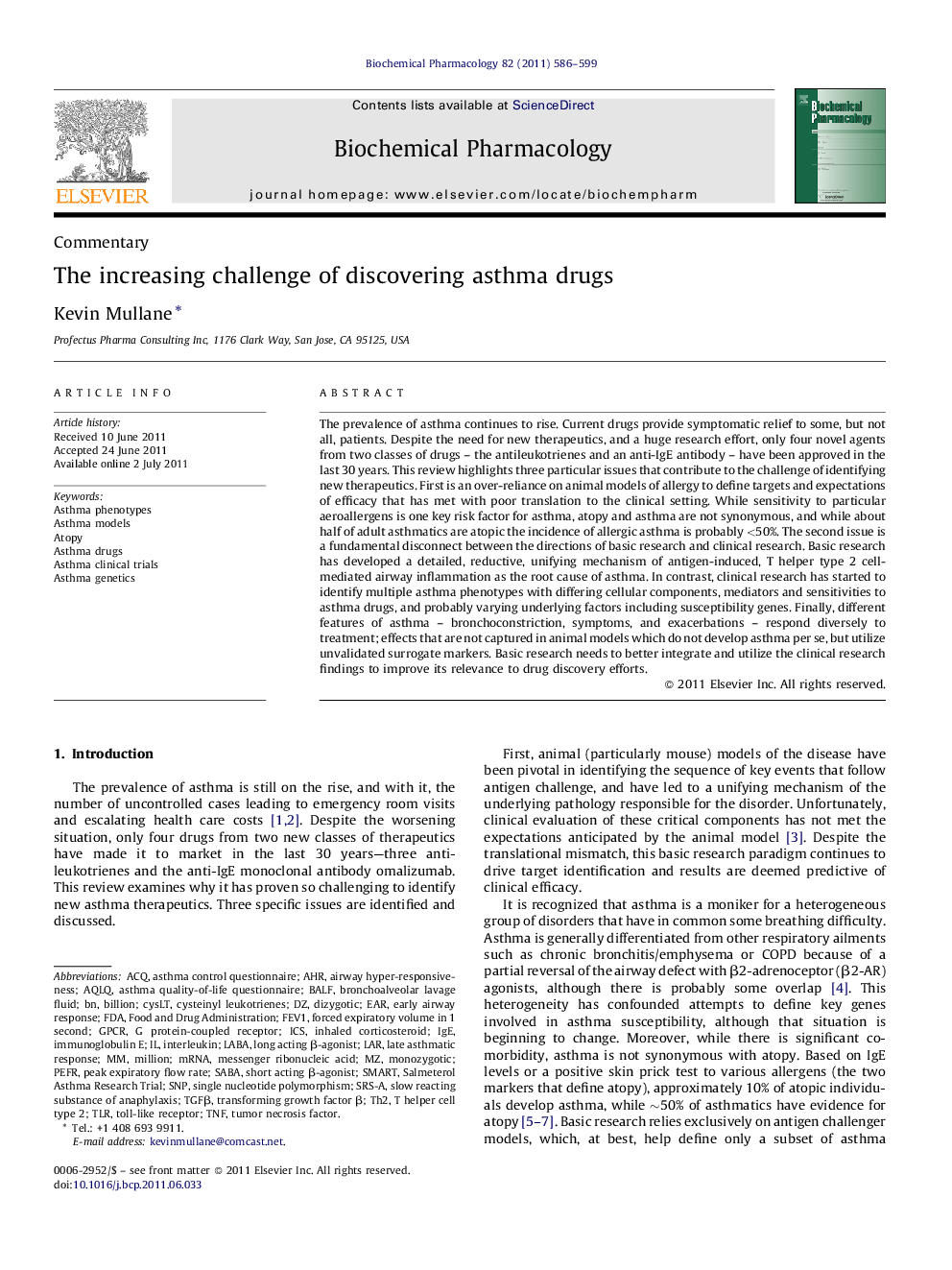| Article ID | Journal | Published Year | Pages | File Type |
|---|---|---|---|---|
| 5824208 | Biochemical Pharmacology | 2011 | 14 Pages |
Abstract
The prevalence of asthma continues to rise. Current drugs provide symptomatic relief to some, but not all, patients. Despite the need for new therapeutics, and a huge research effort, only four novel agents from two classes of drugs - the antileukotrienes and an anti-IgE antibody - have been approved in the last 30 years. This review highlights three particular issues that contribute to the challenge of identifying new therapeutics. First is an over-reliance on animal models of allergy to define targets and expectations of efficacy that has met with poor translation to the clinical setting. While sensitivity to particular aeroallergens is one key risk factor for asthma, atopy and asthma are not synonymous, and while about half of adult asthmatics are atopic the incidence of allergic asthma is probably <50%. The second issue is a fundamental disconnect between the directions of basic research and clinical research. Basic research has developed a detailed, reductive, unifying mechanism of antigen-induced, T helper type 2 cell-mediated airway inflammation as the root cause of asthma. In contrast, clinical research has started to identify multiple asthma phenotypes with differing cellular components, mediators and sensitivities to asthma drugs, and probably varying underlying factors including susceptibility genes. Finally, different features of asthma - bronchoconstriction, symptoms, and exacerbations - respond diversely to treatment; effects that are not captured in animal models which do not develop asthma per se, but utilize unvalidated surrogate markers. Basic research needs to better integrate and utilize the clinical research findings to improve its relevance to drug discovery efforts.
Keywords
FEV1CysLTSABAAQLQT helper cell type 2Th2PEFRFDAICSTLRGPCRACQCysteinyl leukotrienesTGFβAHRSRS-AIgETNFmRNAAtopy IgE, immunoglobulin EinterleukinBALFDizygoticTransforming growth factor βToll-like receptorpeak expiratory flow ratemessenger ribonucleic acidFood and Drug AdministrationLABAtumor necrosis factorasthma phenotypesLarBronchoalveolar lavage fluidforced expiratory volume in 1 secondMonozygoticmillionSMARTEarly airway responseairway hyper-responsivenessLate asthmatic responseAsthma Control Questionnaireasthma quality-of-life questionnaireSingle nucleotide polymorphismSNPasthma geneticsInhaled corticosteroidEARG protein-coupled receptor
Related Topics
Health Sciences
Pharmacology, Toxicology and Pharmaceutical Science
Pharmacology
Authors
Kevin Mullane,
